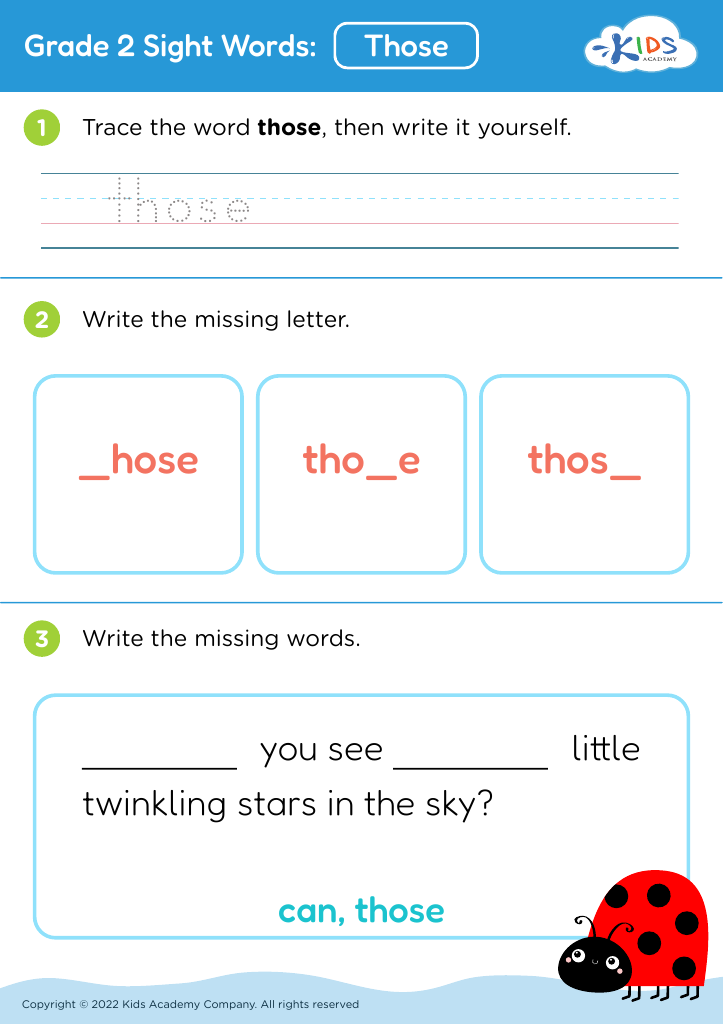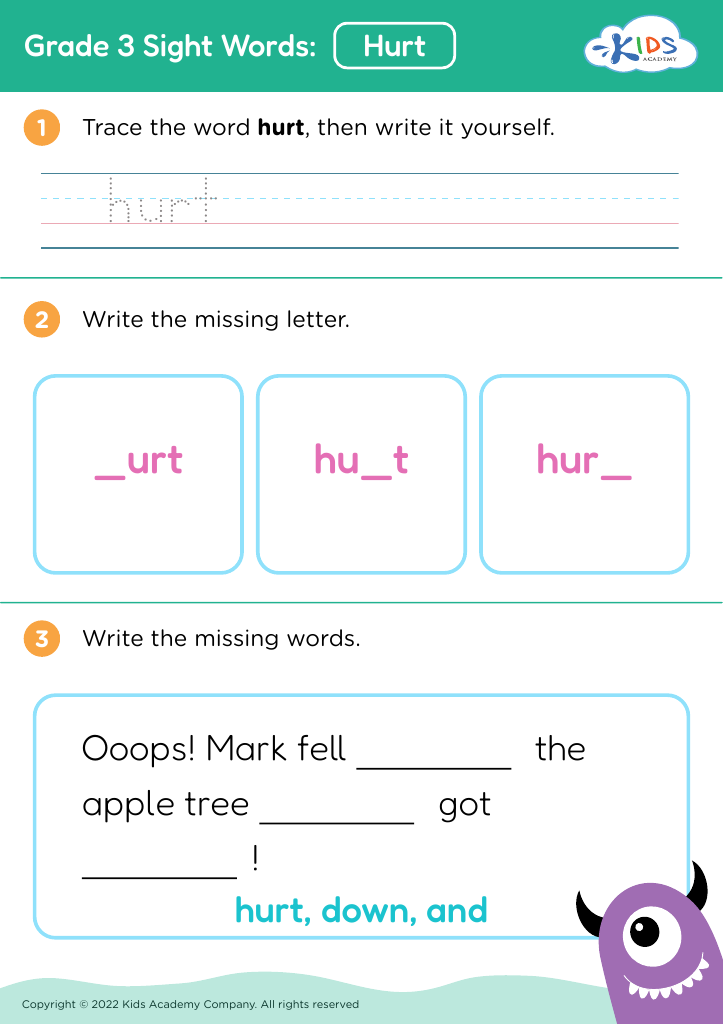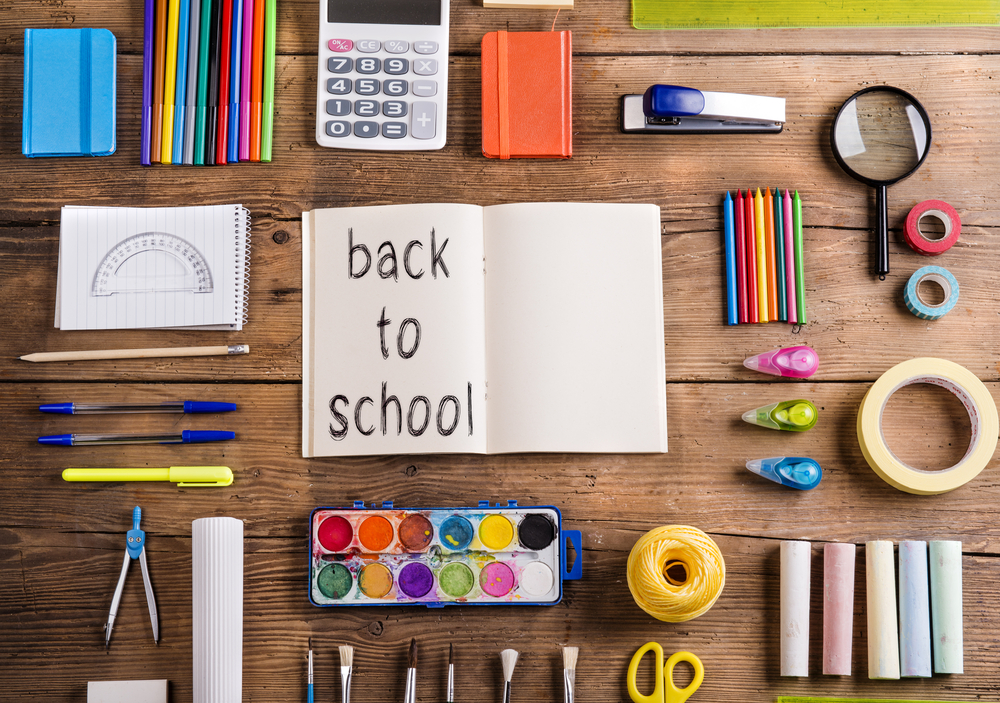Attention to Detail Reading Worksheets for Ages 7-8
8 filtered results
-
From - To
Enhance your child's reading skills with our Attention to Detail Reading Worksheets for ages 7-8. These engaging worksheets are designed to improve focus, comprehension, and critical thinking. Each worksheet features captivating stories and questions that encourage young learners to explore and extract important information. By honing their attention to detail, children will enhance their reading abilities while enjoying the learning process. Perfect for use at home or in the classroom, these worksheets align with educational standards to provide a comprehensive learning experience. Start your child's reading journey today and help them become a detail-oriented reader with our fun and interactive materials!
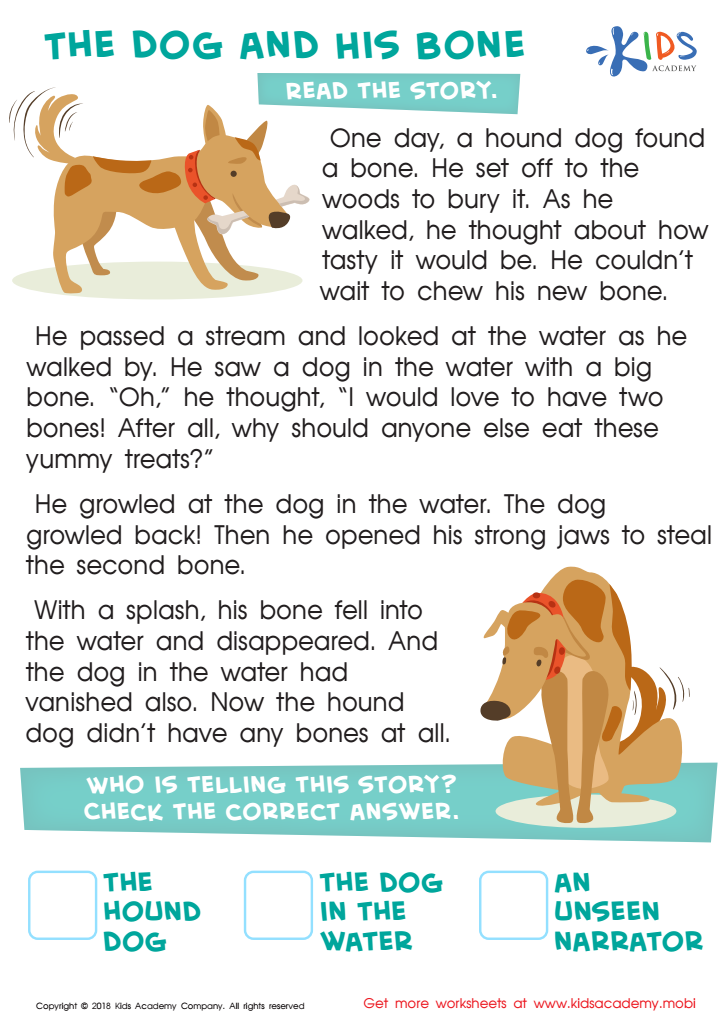

The Dog and His Bone Worksheet
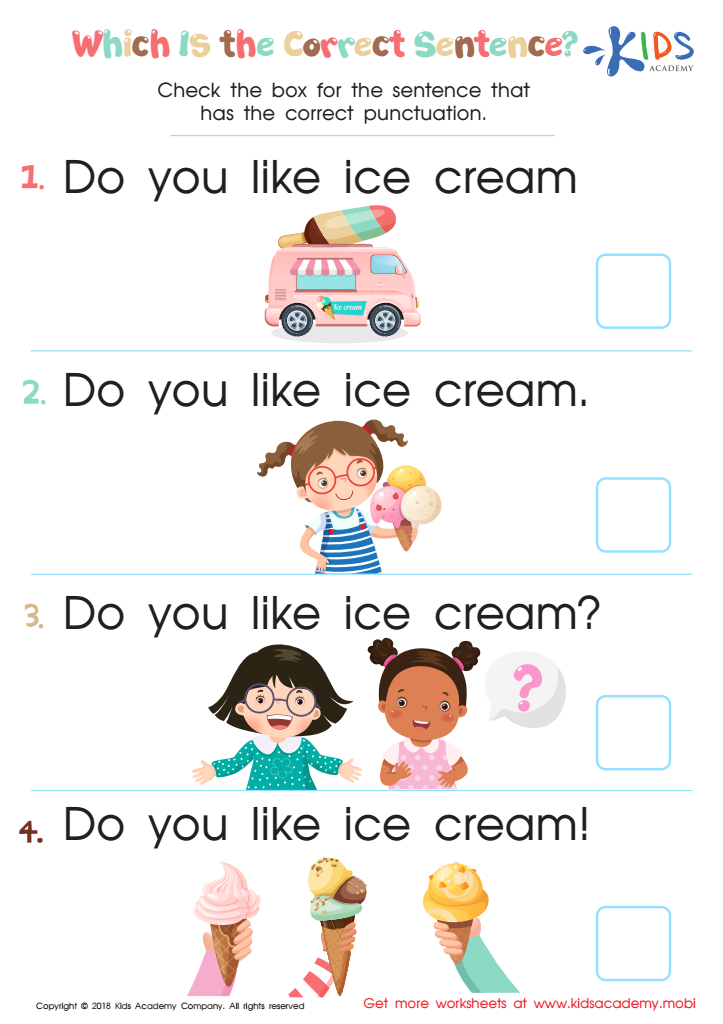

Which is the Correct Sentence? Worksheet
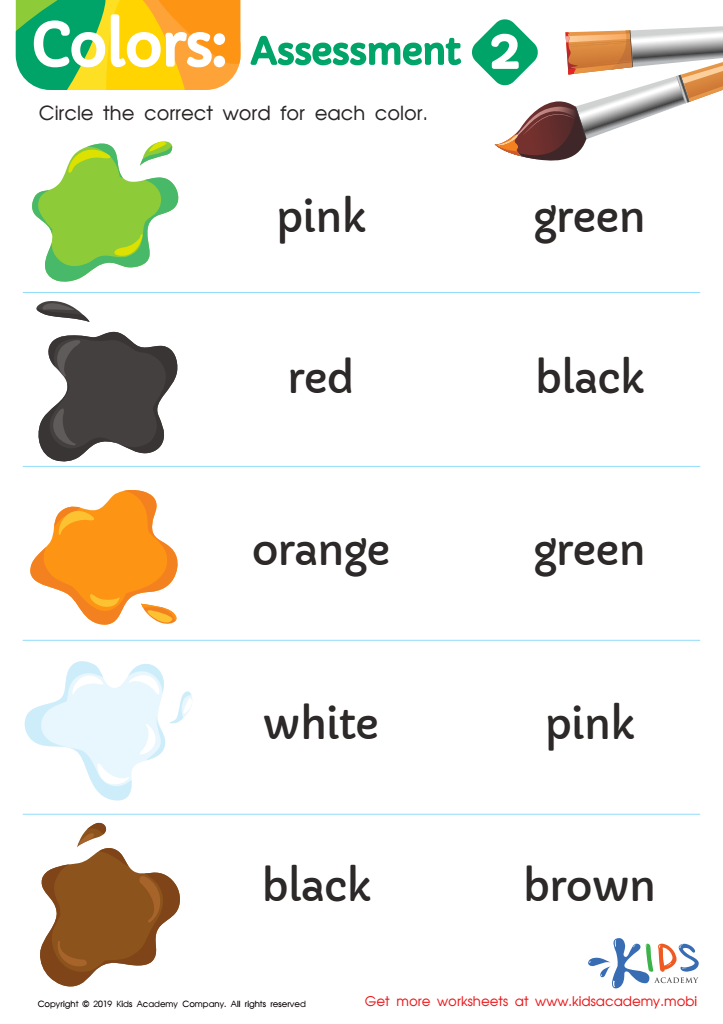

Colors: Assessment 2 Worksheet
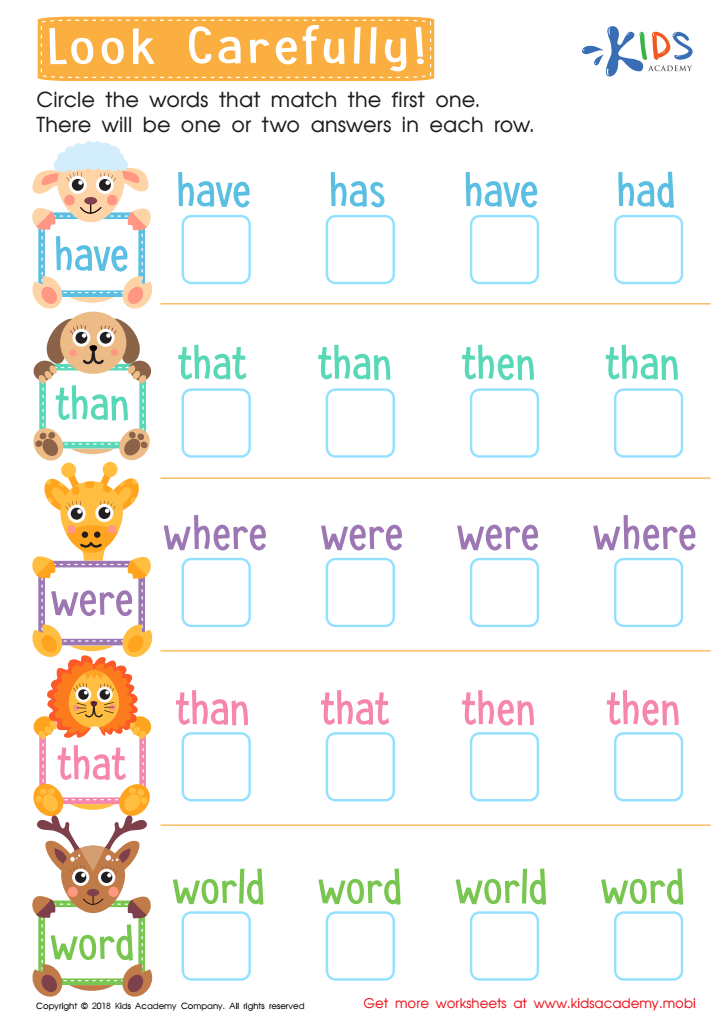

Look Carefully Worksheet
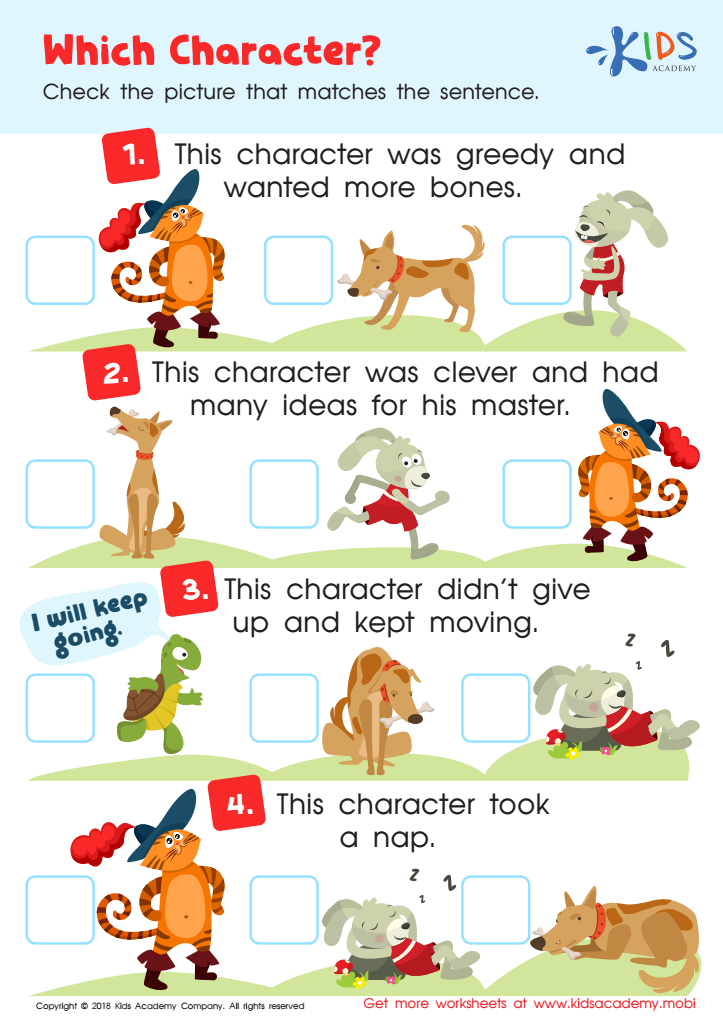

Which Character Worksheet
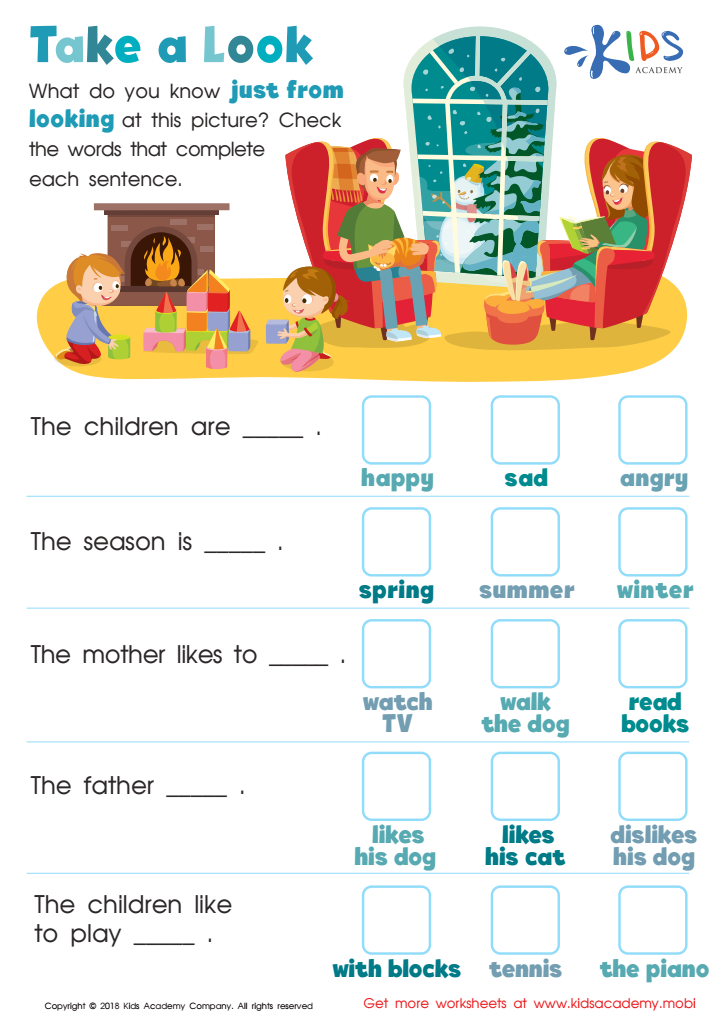

Take a Look - Part 1 Worksheet
Attention to Detail Reading is crucial for children aged 7-8 as it serves as a foundational skill in their overall literacy and cognitive development. At this age, children are transitioning from learning to read to reading to learn. Fostering attention to detail helps them comprehend texts more deeply, ensuring they not only recognize words but understand meaning, context, and nuances.
This skill enhances critical thinking abilities, enabling children to analyze and synthesize information effectively. When children focus on details, they develop better problem-solving skills, get accustomed to asking questions, and learn to make connections between concepts—a vital part of education.
For parents and teachers, nurturing attention to detail fosters a love of reading and encourages a growth mindset. By integrating activities that promote careful reading, such as discussions about characters’ motivations or summarizing stories, adults can help children become engaged readers who appreciate literature's richness.
Moreover, strong attention to detail contributes to academic success across subjects, laying the groundwork for effective communication and expression in writing and verbal interactions. Consequently, prioritizing Attention to Detail Reading at this early age supports the holistic development of children, equipping them for future academic and life challenges.

 Assign to My Students
Assign to My Students
